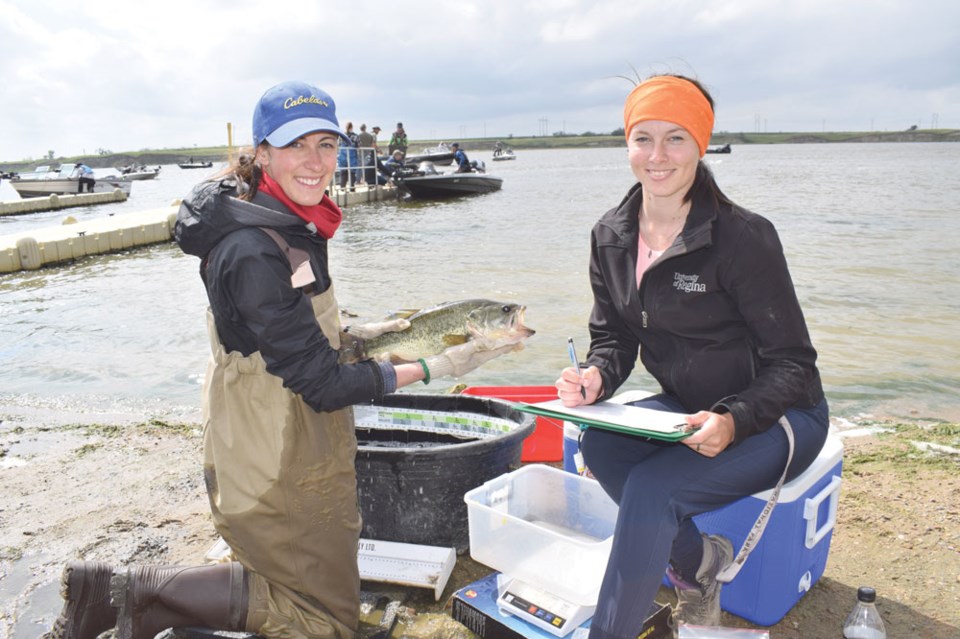It’s been an interesting summer for a couple of University of Regina students who have been travelling the province, learning more about fish populations and the impact of sport fishing.
The fact that they’re both avid anglers only brings more to the project.
Shayna Hamilton, who is originally from the Torquay area, and Michelle Chupik were tagging the fish that were caught during the Boundary Bass Classic, as part of a long-term marker capture study.
“We’re giving each fish a T-bar tag which has a UV code on it, as well as a contact email address, and we are looking to figure out some different things about the fish in the long-term,” said Hamilton.
Hamilton and Chupik are working on a board research program. They are tagging pike, walleye and other species of sport fish at various tournaments, following the same procedure regardless of the fish species.
They have been to Lake Diefenbaker, Last Mountain Lake, Buffalo Pound and Tobin Lake.
“We’re just basically studying the fish populations in these catch and release tournaments,” Hamilton said.
Chupik said this project will give the university a better understanding about sport fishing and recreation.
“It’s such an important industry here in Saskatchewan, so to be able to answer those questions about fish movements, how often they’re caught in their lifetime, would give us a better overall picture of our own fisheries in our own backyard,” said Chupik.
The two young women want to know the recapture rate, growth rates over time and other information from when people recapture fish.
“We tagged fish at the tournament last year for the first time, and we did have multiple recaptures throughout the year, and we actually just saw … two that were tagged last year as part of the tournament this year,” said Hamilton.
When the fish were captured for the second straight year, they believe it showed that catch and release angling works, and that the fish can survive if handled and released properly. It’s also a really good sign for the future of the fishery.
When participants in the fishing derby brought their fish in, the fish were weighed by people involved with the tournament, then put in a tank to ensure they could safely return to the reservoir. Finally, they were taken to Hamilton and Chupik to be marked.
The markings on the fish are permanent. They might attract a little bit of algae over time, so people would need to scrape off the algae with a fingernail.
This project has been running for about three years. Chupik and Hamilton are almost a year into their involvement, and Chupik has another full year to go, while Hamilton has another year-and-a-half remaining.
If somebody catches a fish that has been tagged at one of the tournaments, Hamilton encouraged them to provide the individual code on the tag; she suggested people take a picture of it or write it down, and then email the code to Chris Somers, who is the supervisor of the project. Her email address is chris.somers@uregina.ca.
She also wants to know the date it was caught, and whether the angler kept or released the fish.



